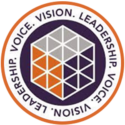Have you ever experienced a traumatic event that left you with lasting effects? June is PTSD Awareness Month, and it’s the perfect time to learn more about post-traumatic stress disorder (PTSD). This condition is more common than you might think, affecting around 12 million American adults. The symptoms can be debilitating, but the good news is that there are treatment options available.
This June, take some time to understand PTSD—what causes it, how it’s different from trauma, who it impacts, and the resources for managing symptoms. You or someone you know may be suffering in silence. Awareness and understanding are the first steps to overcoming the stigma around mental health issues like PTSD. Let’s make this PTSD Awareness Month count.
A History of PTSD Awareness Month

It started on June 27, 2010, as National PTSD Awareness Day. The day was chosen in remembrance of the date when PTSD was officially recognized as a diagnosable condition in the DSM-III in 1980.
Then, in 2014, it was expanded to the entire month of June. The push for PTSD Awareness Month was primarily driven by the National Center for PTSD, a division of the U.S. Department of Veterans Affairs. Their goal is to help people better understand PTSD, its symptoms and triggers, and available treatments while promoting a supportive environment for those living with the condition.
Since the establishment of PTSD Awareness Month, various organizations, nonprofits, and mental health advocates have developed initiatives and activities to promote awareness and education about PTSD. These initiatives include public forums, workshops, conferences, online campaigns, and community events aimed at spreading knowledge about PTSD, its symptoms, and available resources.
PTSD Awareness Month provides an important opportunity for meaningful conversations about PTSD. Many people affected by this condition face challenges accessing effective treatment and support. By raising awareness, we can reduce the stigma around PTSD and encourage those who need help to seek it.
The Impact of PTSD: By the Numbers
PTSD affects millions of Americans each year. The numbers surrounding this condition are staggering:
- Nearly 12 million adults in the U.S. suffer from PTSD. That’s about 6% of the population.
- PTSD can develop after experiencing or witnessing a terrifying event like combat, assault, or disaster. While trauma is a normal reaction, the symptoms of PTSD persist and disrupt life.
- PTSD treatment options include talk therapy, medication, or a combination of the two. Promising new treatments are giving hope to those suffering.
- Women are more likely to develop PTSD than men, with approximately 10% of women and 4% of men experiencing PTSD during their lifetimes
- PTSD is more likely to happen among veterans who have deployed to a war zone than among veterans who have not.
- PTSD can develop at any age, including childhood. Symptoms typically start within 3 months of the traumatic incident but may appear years afterward.
It is important to note that these statistics are only estimates, and the actual prevalence of PTSD may be higher due to factors like underdiagnosis or reluctance to seek treatment.
Trauma vs PTSD
Experiencing a traumatic event is unfortunately common, but most people do not develop PTSD. Trauma can be a one-time event like a car accident, a natural disaster, or an act of violence. PTSD is a chronic mental health condition brought on by a terrible experience. It causes severe symptoms that disrupt your life such as flashbacks, nightmares, severe anxiety, uncontrollable thoughts about the event, and hyperarousal.
During PTSD Awareness Month, understanding the difference between trauma and PTSD is crucial. Educating yourself and others about the signs and symptoms can help reduce stigma and encourage those suffering to seek treatment. With support and proper treatment, individuals dealing with PTSD can go on to live healthy, happy lives.
Common Signs and Symptoms of PTSD
Post-traumatic stress disorder (PTSD) can manifest in various ways, and its symptoms can be grouped into four main categories: re-experiencing, avoidance, negative changes in thinking and mood, and changes in arousal and reactivity.
- Re-experiencing: This category includes symptoms such as flashbacks, nightmares, or intrusive thoughts about the traumatic event.
- Avoidance: Individuals with PTSD might avoid people, places, or situations that remind them of the trauma. They might also refrain from discussing the incident or their emotions surrounding it.
- Negative changes in thinking and mood: PTSD can lead to negative thoughts about oneself or the world, feelings of guilt or shame, and a loss of interest in once enjoyable activities. Individuals with PTSD may also have difficulty remembering aspects of the traumatic event or feel detached from others.
- Changes in arousal and reactivity: PTSD can cause increased irritability, difficulty concentrating, sleep disturbances, or being easily startled. Some people may also engage in reckless or self-destructive behaviors.
Veterans and PTSD
For veterans, the trauma of combat can have lasting effects that haunt them for years after they return home. PTSD is especially common in veterans, with some estimates indicating up to 30% of Vietnam veterans developed PTSD at some point. For veterans of more recent conflicts like Iraq and Afghanistan, the numbers are also high, ranging from 11–20%, according to studies.
These invisible wounds of war can be devastating. Symptoms like flashbacks, nightmares, hypervigilance, and severe anxiety mean many veterans struggle to readjust to civilian life. Tragically, many turn to substance abuse or even suicide to escape their pain. The VA estimates that 20 veterans die by suicide each day in the U.S.
- We must support organizations helping veterans with PTSD.
- Donate or volunteer your time for organizations like the Wounded Warrior Project, Veterans Crisis Line, or local VA hospitals.
- Educate yourself and others about the signs and symptoms of PTSD so you can recognize if a veteran in your life needs help.
- Reach out and let veterans know you care. Something as simple as inviting them for coffee or a meal can help combat the isolation and loneliness many feels.
While veterans are the population most affected by PTSD, they’re not the only ones affected. Anyone can develop PTSD, especially if there is a family history of PTSD or mental illness.
The good news is that PTSD is treatable, and many, veterans or not, are finding hope and healing through counseling, medication, support groups, and alternative therapies like yoga or equine therapy.
Treatment and Resources for PTSD
There are several effective treatments for PTSD. The most common options include:
Therapy, such as cognitive-behavioral therapy (CBT) or exposure therapy. Therapy can help you process your trauma, change negative thought patterns, and develop coping strategies.
Medication, such as antidepressants. Antidepressants can help reduce PTSD symptoms like sadness, worry, and difficulty sleeping. They may be used alone or in combination with therapy.
Eye movement desensitization and reprocessing (EMDR) therapy. EMDR therapy involves recalling distressing events while moving your eyes back and forth. It can help change the way traumatic memories are processed and stored in your brain.
Self-care strategies. Exercise, meditation, yoga, and journaling can help you relieve stress and improve your mood. Connecting with others who have had similar experiences can also help reduce feelings of isolation.
For individuals suffering from PTSD and co-occurring disorders such as substance use disorder (SUD), an integrated approach that addresses both conditions is offered simultaneously. This may involve a combination of therapy, medication management, and other evidence-based interventions.
There are many resources available for those suffering from PTSD. Some options include:
- Contacting your doctor or a mental health professional: They can evaluate your symptoms, provide an official diagnosis, and recommend a treatment plan.
- Calling emergency services or a crisis hotline: If you’re having suicidal thoughts or are in danger there are emergency hotlines you can call. Dial 988 for the Suicide and Crisis Lifeline.
- Researching support groups in your area: Connecting with others who understand what you’re going through can help reduce feelings of isolation and provide coping strategies.
- Exploring online resources: Organizations like the National Center for PTSD, PTSD Alliance, and PTSD Foundation of America offer education, support groups, and additional resources.
Eagle Creek Ranch Recovery is a facility that offers dual diagnosis treatment, addressing both substance use disorders and co-occurring mental health conditions, such as PTSD. We aim to provide a comprehensive recovery experience for individuals struggling with addiction and mental health challenges at the same time.
How to Participate in PTSD Awareness Month
During PTSD Awareness Month, it’s essential to educate yourself and others about post-traumatic stress disorder (PTSD) and support those affected by the condition.
During June, take the opportunity to raise awareness about PTSD on social media using #PTSDAwarenessMonth. You can share facts, personal stories, or information about treatment and resources. Raising awareness helps reduce stigma, educates others, and lets those suffering know they are not alone.
There are many ways to get involved with PTSD Awareness Month:
- Donate to organizations like the National Center for PTSD or PTSD Alliance.
- Contact your government representatives and ask them to support legislation benefitting those with PTSD.
- Organize or participate in an awareness event in your local community.
- Share resources for PTSD treatment and support groups on your social networks.
- Check in on friends and family members who have experienced trauma. Let them know you care.
Remember that PTSD Awareness Month serves as a reminder to prioritize mental health, support those with PTSD, and promote understanding and compassion. By spreading awareness and knowledge, we can contribute to a more supportive and informed society for individuals living with PTSD.
Receive Top-Notch Support at Eagle Creek Ranch Recovery
PTSD is a very real mental health condition that impacts millions of people from all walks of life. What’s good is that supportive services and efficient therapies are readily available. This month, do your part to spread awareness about PTSD. Together, we can work to reduce the stigma around this condition and make sure anyone suffering from PTSD gets the help they need.
If you or a loved one is suffering from a mental health illness such as PTSD, reach out to Eagle Creek Ranch Recovery and receive top-notch treatments. Contact us today!

Clinical Director
Kendall Maloof is the clinical director at Eagle Creek Ranch Recovery. She is a licensed marriage and family therapist and has held multiple leadership roles before settling here at Eagle Creek Ranch Recovery. Kendall received her master’s degree in marriage and family therapy from the Chicago School of Professional Psychology in 2016. Her career in mental and behavioral health began in 2014 when she took up internships in both the nonprofit and for profit sectors. She interned at multiple reputable companies, such as The Living Success Center and 449 Recovery in California.
In 2019, Kendall became the clinical director of Sunsets Recovery for Woman, a dual diagnosis program in southern California. Kendall is a natural leader. She has an incredible ability to problem solve and stay calm in any situation. Kendall never fails to show up when she is needed, and her calm demeanor makes her team and clients feel at ease. Eagle Creek Ranch Recovery is proud to have Kendall as our clinical director.




